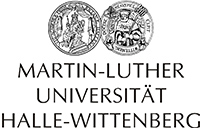Nutrients in microalgae: an environmentally friendly alternative to fish

Microalgae have been the focus of several decades of research – initially as a raw material for alternative fuels, but more recently as a source of nutrients in the human diet.
They are mainly produced in open ponds in Asia; however, these ponds are at risk of potential contamination. Also, some species of algae are easier to cultivate in closed systems, so-called photobioreactors.
“We wanted to figure out whether microalgae produced in photobioreactors in Germany could provide a more environmentally friendly source of essential nutrients than fish,” says Susann Schade from the Institute of Agricultural and Nutritional Sciences at MLU.
Up to now, photobioreactors had usually only been compared to pond cultivation and they often scored worse due to their higher environmental impacts.
“However, little research has been done on the precise extent of the environmental impacts of algae produced for human consumption, especially under climatic conditions such as those found in Germany,” adds Schade.
For their study, the researchers developed a model to determine location-specific environmental impacts. “One of the things we did was to compare the carbon footprint of nutrients from microalgae and fish. We also analysed how much both food sources increase the acidification and eutrophication in water bodies,” explains Dr Toni Meier, head of the Innovation Office nutriCARD at MLU.
The researchers were able to show that microalgae farming has a similar impact on the environment as fish production. “However, if we compare the environmental effects in relation to the amount of omega-3 fatty acids produced, fish from aquaculture comes off far worse,” says Schade.
One advantage of algae cultivation is its low land consumption; even infertile soils can be used. In contrast, both open ponds and the cultivation of feed for aquaculture require very large areas of land.
In particular, fish species that are popular in Germany, such as salmon and pangasius, are primarily produced through aquaculture and therefore put the environment under a considerable amount of pressure. However, even fishing wild Alaska pollack had poorer values than microalgae for all environmental indicators.
“Microalgae should not and cannot completely replace fish as a food source. But if microalgae could be established as a common food, it would be another excellent environmentally friendly source of long-chain omega-3 fatty acids,” explains Meier.
Several algae are already used as a food supplement in powder or tablet form and as an additive to foods such as pasta or cereals. It would be a way to reduce the current gap in the global supply of omega-3 fatty acids. At the same time, it would provide considerable relief to the world’s oceans.
The study was funded by the Federal Ministry of Education and Research (BMBF) as part of the joint project “Novel microalgae species as a sustainable source of bioactive nutrients in human nutrition” (NovAL).
In addition to MLU, the Anhalt University of Applied Sciences, the University of Leipzig and the Friedrich Schiller University Jena are involved in the research alliance.
Susann Schade
Institute of Agricultural and Nutritional Sciences
email: susann.schade@landw.uni-halle.de
Dr. Toni Meier
Institute of Agricultural and Nutritional Sciences
Innovation Office nutriCARD
phone: +49 345 55-22650
email: toni.meier@landw.uni-halle.de
Schade S., Stangl G.I., Meier T. Distinct microalgae species for food-part 2: comparative life cycle assessment of microalgae and fish for eicosapentaenoic acid (EPA), docosahexaenoic acid (DHA), and protein. Journal of Applied Phycology (2020). http://dx.doi.org//10.1007/s10811-020-02181-6
Media Contact
More Information:
http://www.uni-halle.deAll latest news from the category: Health and Medicine
This subject area encompasses research and studies in the field of human medicine.
Among the wide-ranging list of topics covered here are anesthesiology, anatomy, surgery, human genetics, hygiene and environmental medicine, internal medicine, neurology, pharmacology, physiology, urology and dental medicine.
Newest articles

Pinpointing hydrogen isotopes in titanium hydride nanofilms
Although it is the smallest and lightest atom, hydrogen can have a big impact by infiltrating other materials and affecting their properties, such as superconductivity and metal-insulator-transitions. Now, researchers from…

A new way of entangling light and sound
For a wide variety of emerging quantum technologies, such as secure quantum communications and quantum computing, quantum entanglement is a prerequisite. Scientists at the Max-Planck-Institute for the Science of Light…

Telescope for NASA’s Roman Mission complete, delivered to Goddard
NASA’s Nancy Grace Roman Space Telescope is one giant step closer to unlocking the mysteries of the universe. The mission has now received its final major delivery: the Optical Telescope…



